It looks like you're using an Ad Blocker.
Please white-list or disable AboveTopSecret.com in your ad-blocking tool.
Thank you.
Some features of ATS will be disabled while you continue to use an ad-blocker.
share:
reply to post by watchZEITGEISTnow
If you like extraterrestrial hexagons you should love the one photographed above Saturns' north pole...
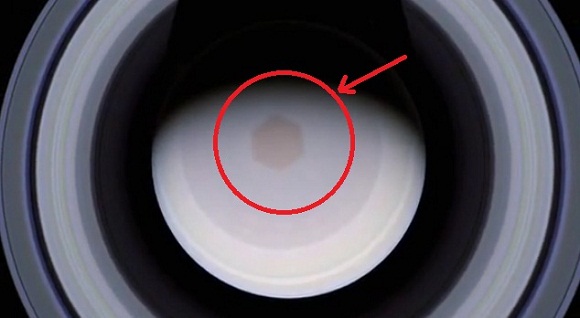
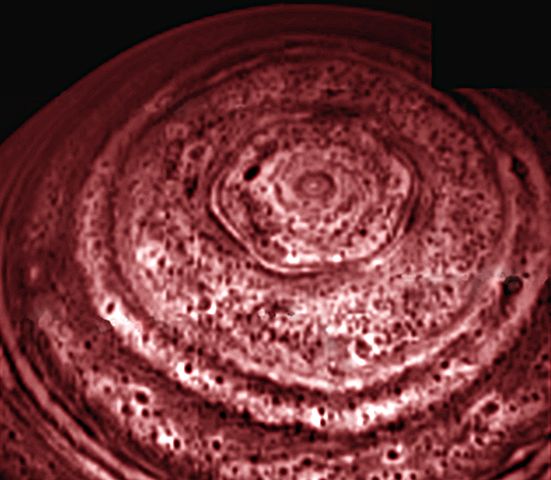
Bizarre hexagon circles Saturn's north pole
If you like extraterrestrial hexagons you should love the one photographed above Saturns' north pole...


A deep, hexagon-shaped feature lies above Saturn's north pole, newly released images from the Cassini spacecraft reveal. The strange structure appears to be nearly stationary and may be a wave that stretches deep into the giant planet's atmosphere.
NASA's Voyager 1 and 2 spacecraft glimpsed parts of the feature nearly 30 years ago, but because of their viewing angle, they were not able to see the whole thing. Now, Cassini's visual and infrared mapping spectrometer has captured the entire hexagon for the first time, thanks to a series of infrared images it took as the spacecraft flew over the pole in October and November 2006 (see Cassini snaps Saturn from a dizzying height).
The hexagon spans nearly 25,000 kilometres - the width of two Earths - and appears to be a clearing in the clouds that extends at least 75 km below the planet's visible cloudtops. Watch a movie of clouds whipping around Saturn's strange hexagon .
"This is a very strange feature, lying in a precise geometric fashion with six nearly equally straight sides," says team member Kevin Baines of NASA's Jet Propulsion Laboratory in Pasadena, California, US. "We've never seen anything like this on any other planet."
Bizarre hexagon circles Saturn's north pole
reply to post by Drunkenparrot
You know the hexagon can also be interpenetrated as a cube! trippy eh?
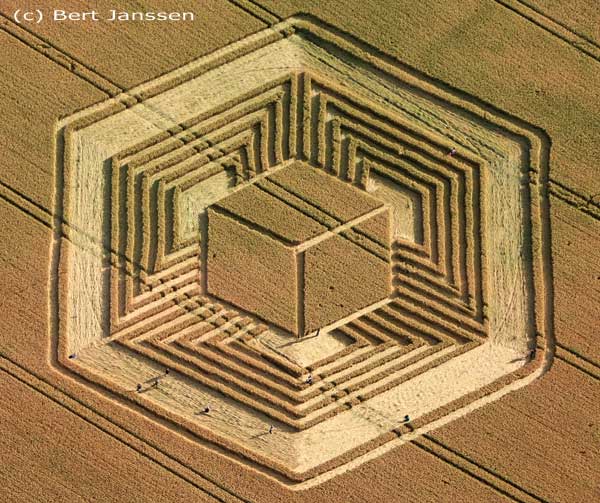
You know the hexagon can also be interpenetrated as a cube! trippy eh?

Originally posted by watchZEITGEISTnow
And STILL can't get the noggin around this double hexagon - I think it looks like it has been blown up from the inside of the crater - relics of a past war perhaps?
Actually, the moon is lousy with hexagons, as you can see in this large color picture of the moon.
www.rc-astro.com...
It seems the older, more eroded craters have more of a hexagonal shape. There are so many and in such a variety of sizes these have to be caused by natural phenomenon.
This abstract from adsabs.harvard.edu...
The possibility of impacts of large meteorites on the thin crust of the early moon accounting for the formation of the hexagonal lunar craters is discussed. Solidified basalts comprising a lunar crust of thickness 10 to 50 km characteristic of the earliest stage in lunar evolution are shown to have a large-scale hexagonal pillar structure, due to the effects of shrinkage. Results of experimental simulations of the propagation in this hexagonal pillar structure of the shock wave generated by the impact of a meteorite of diameter 10 km and mass 10 to the 15th kg on the lunar crust are then presented which demonstrate the pushing away from a central circular shock of pillars resting on a low-friction surface in a hexagonal pattern.
reply to post by watchZEITGEISTnow
No they don't. Phobos the larger moon orbits Mars in 7.3 hours and appears to rise in the east and set in the west, as a day on Mars is similar to a day on earth, about 24 hours.
Now Triton the large moon of Neptune is the only moon in the solar system with a retrograde orbit, opposite the rotation of Neptune.
BTW Philly, our moon is in what is called a tidal lock, like most moons in the solar system, it is not strange but in fact, consistent with most orbiting planetary moons, in fact the planet Mercury by some is considered to be in a 2/3 tidal lock with the sun.
The moons of Mars are widely believed to be captured asteroids, and in near celestial time, Phobos will crash down to Mars or be ripped apart once it reaches the Martian Roche radius as it has a deteriorating orbit, and is so small compared to Mars. Deimos will last longer, its much further away.
No they don't. Phobos the larger moon orbits Mars in 7.3 hours and appears to rise in the east and set in the west, as a day on Mars is similar to a day on earth, about 24 hours.
Now Triton the large moon of Neptune is the only moon in the solar system with a retrograde orbit, opposite the rotation of Neptune.
BTW Philly, our moon is in what is called a tidal lock, like most moons in the solar system, it is not strange but in fact, consistent with most orbiting planetary moons, in fact the planet Mercury by some is considered to be in a 2/3 tidal lock with the sun.
The moons of Mars are widely believed to be captured asteroids, and in near celestial time, Phobos will crash down to Mars or be ripped apart once it reaches the Martian Roche radius as it has a deteriorating orbit, and is so small compared to Mars. Deimos will last longer, its much further away.
So, what we are seeing here is an abundant lack of understanding regarding selenology, image data compression, paredolia, and the simple fact of what
tidal locking is. All of this then is extrapolated into wild conjectures about artificial structures scattered throughout our solar system and made
into 3D projections based on dated photographs and a wild imagination run amok in a 3D program.
By the way, people do realize that *most* of the natural satellites in our system are tidally locked, yes? I mean...that's just...
Fellas, I have a bridge you can buy. It's real cheap. I promise.
By the way, people do realize that *most* of the natural satellites in our system are tidally locked, yes? I mean...that's just...
Fellas, I have a bridge you can buy. It's real cheap. I promise.
Originally posted by Raivan31
It's just always seemed strange to me that these moons, or more specifically our own moon has one side facing the earth all the time, and our satellites need constant course correction to achieve this.
I believe this explanation might help illustrate the answer to your question...
All pairs of gravitationally bound bodies tend to "sync" like this. However, it takes billions of years to become as apparent as the case of the Moon's sole face toward the Earth. In fact, most Moons in the solar system are sufficiently small compared to the planets they orbit that, over time, gravity has proven strong enough to lock the satellites' rotations to match their orbital periods.
The Moon is tidally locked to the Earth. When two rotating bodies orbit each other, they raise tides in each other. These tides cause mechanical friction. So tidal activity absorbs a lot of energy out of the rotational energy of the bodies. In other words, the energy in the form of rotational inertia is partially converted into tidal, geophysical changes in the bodies involved.
The Moon's rotational inertia has been exhausted, converted into geophysical change in the Earth and Moon. The Moon, being much smaller than the Earth, long ago dissipated enough energy to lose rotation so that its tidal bulges are now always aligned with the gravitational pull of the Earth.
The Earth still raises a "tide" in the Moon but it is in a balanced, steady state now and does not stretch the rock any more -- there's no more spin for the Moon to give up.
Since the Earth is still spinning relative to the Moon, the Earth is continuously and dynamically being affected by the gravitational pull of the Moon. The mechanical friction includes fluid flows around the Earth's surface as ocean tides, motion of the molten core within the Earth as well as the stretching of solid rock along the planet's crust. (For a sense of scale, note that maritime tides are recorded in meters while tides in the solid aspect of the Earth are recorded in centimeters.)
This mechanical drag is a major reason for why the Earth's rotation is slowing. The day length is slowly lengthening, and has over geological time increased to 24 hours, up from 18 hours. Eventually, the Earth will no longer spin in relation to the Moon. Some time many billions of years into the future, the Earth will turn its same face to the Moon as well.
Why Doesn't the Moon Rotate?
Then there's the whole, moon ringing like a bell when something hits it.. thats a bit odd.
The "moon ringing like a bell" quote pertains to a lunar observation that due to differing geological properties lunar quakes propagate significantly longer than their Terran equivalents.
It is taken out of context by conspiracy theorists and used as psuedoscientific proof that the moon is actually a hollow structure ( There is conclusive evidence including the aforementioned seismic recordings that demonstrates it is not)
Between 1969 and 1972, Apollo astronauts placed seismometers at their landing sites around the moon. The Apollo 12, 14, 15, and 16 instruments faithfully radioed data back to Earth until they were switched off in 1977.
The first three were generally mild and harmless. Shallow moonquakes on the other hand were doozies. Between 1972 and 1977, the Apollo seismic network saw twenty-eight of them; a few "registered up to 5.5 on the Richter scale," says Neal.(Clive R. Neal, associate professor of civil engineering and geological sciences at the University of Notre Dame)
A magnitude 5 quake on Earth is energetic enough to move heavy furniture and crack plaster.
Furthermore, shallow moonquakes lasted a remarkably long time. Once they got going, all continued more than 10 minutes. "The moon was ringing like a bell," Neal says .
On Earth, vibrations from quakes usually die away in only half a minute. The reason has to do with chemical weathering, Neal explains: "Water weakens stone, expanding the structure of different minerals. When energy propagates across such a compressible structure, it acts like a foam sponge—it deadens the vibrations." Even the biggest earthquakes stop shaking in less than 2 minutes.
The moon, however, is dry, cool and mostly rigid, like a chunk of stone or iron. So moonquakes set it vibrating like a tuning fork. Even if a moonquake isn't intense, "it just keeps going and going," Neal says. And for a lunar habitat, that persistence could be more significant than a moonquake's magnitude.
Moonquakes
And if all of these tidal forces and gravity and what-have-you are acting on the moon then why is there no volcanic activity?
The moon was volcanically active for the first billion years or so until the lunar mass had cooled enough that there was no longer the heat needed to drive convection required for plate tectonics or warm molten pockets of magma near the surface.
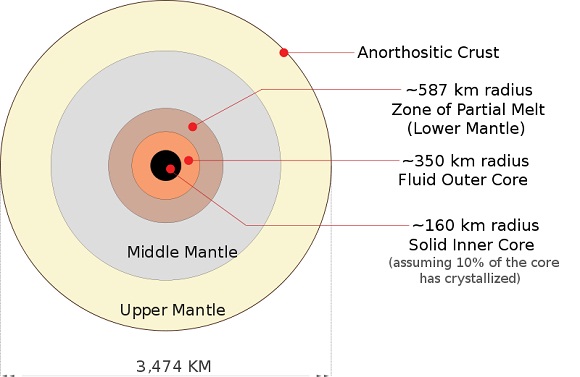
There are common lunar seismic events correlated with the gravitational tidal pull of the earth as well as shallower events thought to be caused by thermal expansion and contraction, impact events etc.
There is not enough tidal energy at work to cause the kind of heating through gravitational friction thought to drive the active volcanism observed on Io or the water geysers on Enceladus
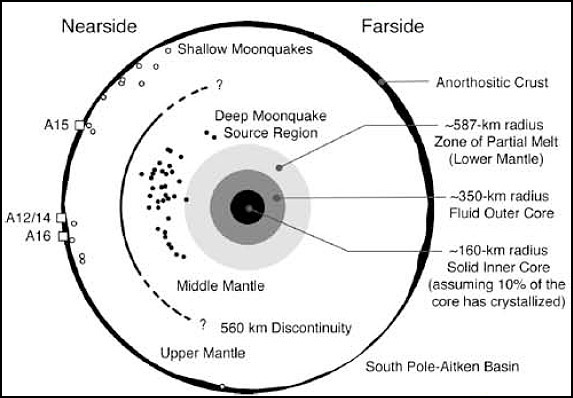
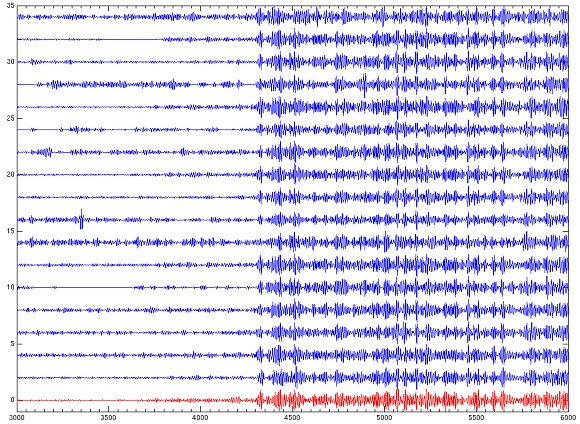
Seismology on the Moon
Stranger still is why these moons don't rapidly degrade in orbit and impact their planets. the moons around gas giants must be under incredible strain.
Actually, this has two answers, neither of which are strange at all.
Without friction acting on the system, the laws which govern angular momentum and conservation of energy make it so...
Any system involving a satellite orbiting a planet slower than the rotational period of he planet (which are most) is subject to tidal acceleration which in short means that the satellite slowly gains momentum through the gravitational pull of the planets tidal bulge and over eons of time the satellite will drift further away.
Tidal acceleration is an effect of the tidal forces between an orbiting natural satellite (e.g. the Moon), and the primary planet that it orbits (e.g. the Earth). The "acceleration" is usually negative, as it causes a gradual slowing and recession of a satellite in a prograde orbit away from the primary, and a corresponding slowdown of the primary's rotation. The process eventually leads to tidal locking of first the smaller, and later the larger body. The Earth-Moon system is the best studied case.
The similar process of tidal deceleration occurs for satellites that have an orbital period that is shorter than the primary's rotational period, or that orbit in a retrograde direction.
Tidal acceleration
the moons around gas giants must be under incredible strain.
What you are asking about is called the Roche limit
The Roche limit was first described by Edouard Roche in 1848. The Roche limit is the closest distance an object can come to another object without being pulled apart by tidal forces. If a planet and a moon have identical densities, then the Roche limit is 2.446 times the radius of the planet.
A large moon orbiting inside the Roche limit will be destroyed. The Earth's Roche limit is 18,470 km (11,470 miles). If our Moon ever ventured within this Roche limit, it would be pulled apart by tidal forces and the Earth would have rings.
The four gaseous outer planets do have their rings systems inside of their respective Roche limit. The Roche limits for the gaseous planets are:
Jupiter - 175,000 km (108,000 miles)
Saturn - 147,000 km ( 92,000 miles)
Uranus - 62,000 km ( 39,000 miles)
Neptune - 59,000 km ( 37,000 miles)
On July 7, 1992, Comet Shoemaker-Levy 9 broke apart in 21 pieces due to tidal forces when it made a close approach of Jupiter which was within the Roche limit. On the subsequent pass, each of the pieces of the comet impacted Jupiter.
What is the Roche limit?
Typically, the Roche limit applies to a satellite disintegrating due to tidal forces induced by its primary, the body about which it orbits.
Parts of the satellite that are closer to the primary are attracted by stronger gravity from the primary, whereas parts further away are repelled by stronger centrifugal force from the satellite's curved orbit.
Some real satellites, both natural and artificial, can orbit within their Roche limits because they are held together by forces other than gravitation. Jupiter's moon Metis and Saturn's moon Pan are examples of such satellites, which hold together because of their tensile strength (that is, they are solid and not easily pulled apart).
In extreme cases, objects resting on the surface of such a satellite could actually be lifted away by tidal forces. A weaker satellite, such as a comet, could be broken up when it passes within its Roche limit.
Since tidal forces overwhelm the gravity that might hold the satellite together within the Roche limit, no large satellite can gravitationally coalesce out of smaller particles within that limit.
Indeed, almost all known planetary rings are located within their Roche limit, Saturn's E-Ring and Phoebe ring being notable exceptions. They could either be remnants from the planet's proto-planetary accretion disc that failed to coalesce into moonlets, or conversely have formed when a moon passed within its Roche limit and broke apart.
Roche limit
I'm sure people have answers for this but it still seems odd.
I hope this helps...
edit on 3-1-2012 by Drunkenparrot because: syntax
Originally posted by watchZEITGEISTnow
Can anyone explain this especially the left circled anomaly and what appears to be a raised wall akin to a fort of some type?
[atsimg]http://files.abovetopsecret.com/files/fc424f22254dd24f.jpg[/atsimg]
And STILL can't get the noggin around this double hexagon - I think it looks like it has been blown up from the inside of the crater - relics of a past war perhaps?
[atsimg]http://files.abovetopsecret.com/files/84483bcf2c1daad5.jpg[/atsimg]edit on 2-1-2012 by watchZEITGEISTnow because: (no reason given)
Brilliant discovery!
Thx for this thread!
S&F!
To the OP. If you're going to investigate YouTube video's, and things about Moon's et cetera, try investigate some actual facts, and learn some real
things first before bringing threads like this.
Example : Tidal locking.
Lol @ 14 flags already.
Example : Tidal locking.
Lol @ 14 flags already.
edit on 3-1-2012 by Violence because: (no reason given)
only reason there where man made missions to the moon was to fix maintain and confirm that the mining op / structure building was going as planned
my take on it all ,
my take on it all ,
Originally posted by watchZEITGEISTnow
STRUCTURES
Back on topic!
Yup, let's talk about them not being there.
Originally posted by Arken
Originally posted by watchZEITGEISTnow
Can anyone explain this especially the left circled anomaly and what appears to be a raised wall akin to a fort of some type?
[atsimg]http://files.abovetopsecret.com/files/fc424f22254dd24f.jpg[/atsimg]
And STILL can't get the noggin around this double hexagon - I think it looks like it has been blown up from the inside of the crater - relics of a past war perhaps?
[atsimg]http://files.abovetopsecret.com/files/84483bcf2c1daad5.jpg[/atsimg]edit on 2-1-2012 by watchZEITGEISTnow because: (no reason given)
Brilliant discovery!
Thx for this thread!
S&F!
hey Arken I cant work out how both those anomalies were made - but the "fort" to me looks like it has been made by someone or something - really amazing.
Please explain to me how you think that "fort" was made by someone/something?
Then I'll explain to you how they weren't.
By the way, if you didn't already know, no one with half a brain actually considers that a fort.
Then I'll explain to you how they weren't.
By the way, if you didn't already know, no one with half a brain actually considers that a fort.
edit on 3-1-2012 by Violence because: (no
reason given)
Originally posted by Violence
To the OP. If you're going to investigate YouTube video's, and things about Moon's et cetera, try investigate some actual facts, and learn some real things first before bringing threads like this.
Example : Tidal locking.
Lol @ 14 flags already.edit on 3-1-2012 by Violence because: (no reason given)
I thought this three was about structures on the Moon ?
reply to post by Saytan75
Are you determined to destroy egos here? Did you not see that it's unfathomable to them?
How mean!!!
star btw
Are you determined to destroy egos here? Did you not see that it's unfathomable to them?
How mean!!!
star btw
Originally posted by watchZEITGEISTnow
Originally posted by alexs
reply to post by Raivan31
the orbit of the moon coincides with its rotation yes it does rotate
yet we only see one side of the Moon - no other known planetary body does this ...
Now why do you think that is?
That is not true, charon and pluto does this, venus almost does this (but not exactly), and it's thought that quite a few extra-solar planets do this. It's called tidal locking.
edit on 3-1-2012 by WeSbO because: (no reason given)
reply to post by watchZEITGEISTnow
Thank you for sharing, these videos are hilarious. I love the little legs he draws under things.
Thank you for sharing, these videos are hilarious. I love the little legs he draws under things.
edit on 3-1-2012 by DJW001 because: (no reason
given)
I agree....funny vids, but nothing in them can be taken seriously.
I could do exactly the same thing in maya, and claim giant cats were in craters.
I could do exactly the same thing in maya, and claim giant cats were in craters.
So the moon rotates about its axis, why are there no photos of the 'backside' of the moon, taken from earth? and not many pictures of the
'backside' of the moon taken from satellites?(Am I wrong about the last sentence?)
reply to post by pikestaff
The Moon does rotate on its axis, it's just that it rotates at the same speed that it orbits Earth. Maybe this will help:
The far side of the Moon has been extensively mapped by probes.
So the moon rotates about its axis, why are there no photos of the 'backside' of the moon, taken from earth? and not many pictures of the 'backside' of the moon taken from satellites?(Am I wrong about the last sentence?)
The Moon does rotate on its axis, it's just that it rotates at the same speed that it orbits Earth. Maybe this will help:
The far side of the Moon has been extensively mapped by probes.
new topics
-
Bobiverse
Fantasy & Science Fiction: 56 minutes ago -
Florida man's trip overseas ends in shock over $143,000 T-Mobile phone bill
Social Issues and Civil Unrest: 1 hours ago -
Former Labour minister Frank Field dies aged 81
People: 3 hours ago -
SETI chief says US has no evidence for alien technology. 'And we never have'
Aliens and UFOs: 4 hours ago -
This is our Story
General Entertainment: 7 hours ago -
President BIDEN Vows to Make Americans Pay More Federal Taxes in 2025 - Political Suicide.
2024 Elections: 9 hours ago -
Ode to Artemis
General Chit Chat: 10 hours ago
top topics
-
President BIDEN Vows to Make Americans Pay More Federal Taxes in 2025 - Political Suicide.
2024 Elections: 9 hours ago, 13 flags -
Should Biden Replace Harris With AOC On the 2024 Democrat Ticket?
2024 Elections: 15 hours ago, 6 flags -
One Flame Throwing Robot Dog for Christmas Please!
Weaponry: 14 hours ago, 6 flags -
Don't take advantage of people just because it seems easy it will backfire
Rant: 14 hours ago, 4 flags -
Ditching physical money
History: 14 hours ago, 4 flags -
SETI chief says US has no evidence for alien technology. 'And we never have'
Aliens and UFOs: 4 hours ago, 4 flags -
Ode to Artemis
General Chit Chat: 10 hours ago, 3 flags -
Former Labour minister Frank Field dies aged 81
People: 3 hours ago, 3 flags -
VirginOfGrand says hello
Introductions: 15 hours ago, 2 flags -
This is our Story
General Entertainment: 7 hours ago, 2 flags
active topics
-
President BIDEN Vows to Make Americans Pay More Federal Taxes in 2025 - Political Suicide.
2024 Elections • 39 • : confuzedcitizen -
Mood Music Part VI
Music • 3096 • : TheWoker -
So this is what Hamas considers 'freedom fighting' ...
War On Terrorism • 253 • : network dude -
University student disciplined after saying veganism is wrong and gender fluidity is stupid
Education and Media • 45 • : TzarChasm -
Florida man's trip overseas ends in shock over $143,000 T-Mobile phone bill
Social Issues and Civil Unrest • 1 • : budzprime69 -
Don't take advantage of people just because it seems easy it will backfire
Rant • 7 • : confuzedcitizen -
"We're All Hamas" Heard at Columbia University Protests
Social Issues and Civil Unrest • 270 • : TheWoker -
Post A Funny (T&C Friendly) Pic Part IV: The LOL awakens!
General Chit Chat • 7131 • : baddmove -
Russia Ukraine Update Thread - part 3
World War Three • 5725 • : BernnieJGato -
NASA Researchers Discover a Parallel Universe That Runs Backwards through Time - Alongside Us
Space Exploration • 70 • : seekshelter
